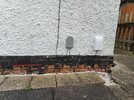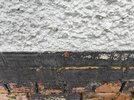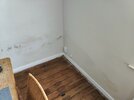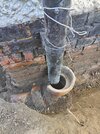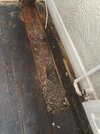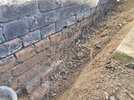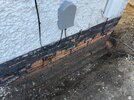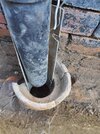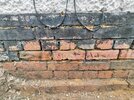OP,
The blackstuff was traditionally applied as a hopeful barrier to prevent further damp after damp had already appeared inside the house.
It was not "applied to hide damp".
There are no indications in your pics of: "a drain fault".
1. Can you indicate on one of the above pics where your solid floor level is?
2. Was the solid floor concrete laid on a membrane,(a DPM)? Removing a piece of skirting might show plastic?
2. Can you post a pic showing the interior damp?
3. Does the down pipe go into a gulley?
4. Do the bottom courses of painted brick project a little from the brickwork above them? Creating a lip?
Whatever, render should typically end with a Bell Cast.
5. If, for some reason, you want to test your drainage then there are various very simple very cheap, methods of doing it.
1. I marked floor level on the photos
2. I havent checked yet, will comeback about this one
2. Attached
3. Yes, there is definely a gulley and as mentioned earlier the water flows smoothly during rain.
4. The bottom courses are almost flush with the render, so without render the would be a lip. No sings of Bell Cast or anyting like that. See the photos
Re 5. What would you recommend, that can by done by a DYIer
These photos are from the front of the house. Previous ones are from the side, where you can see the paving is two courses higher


